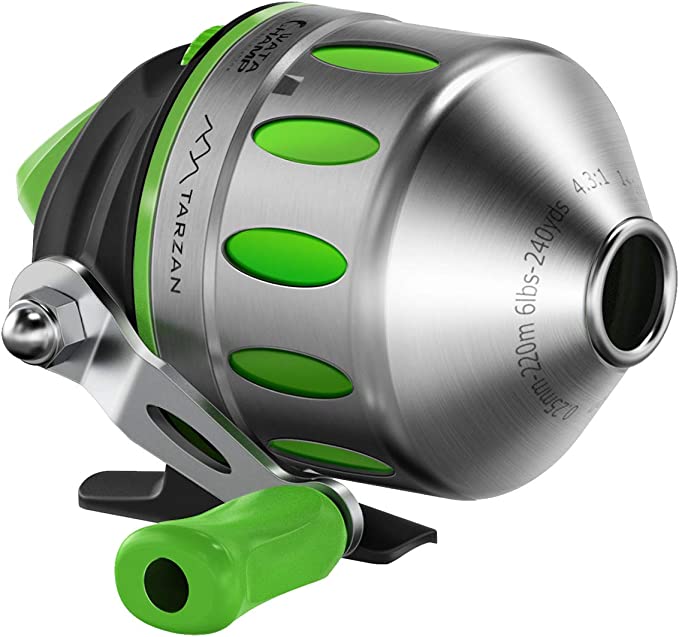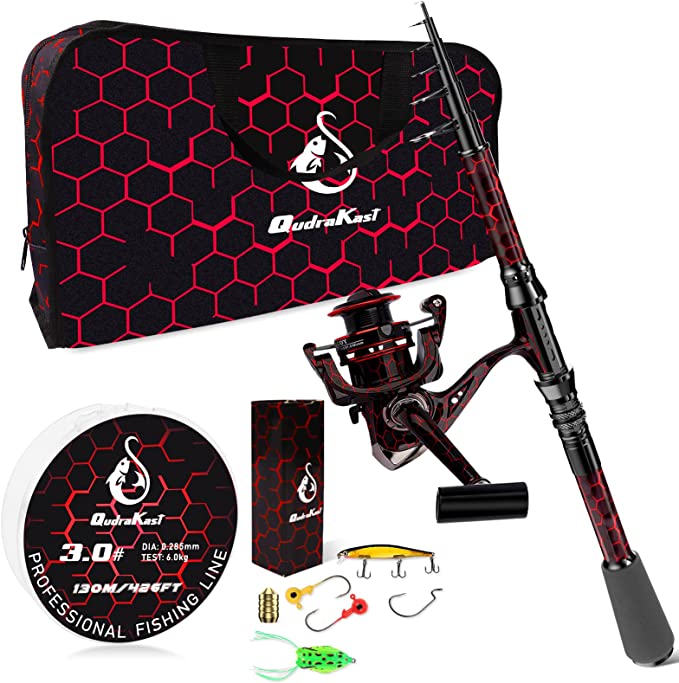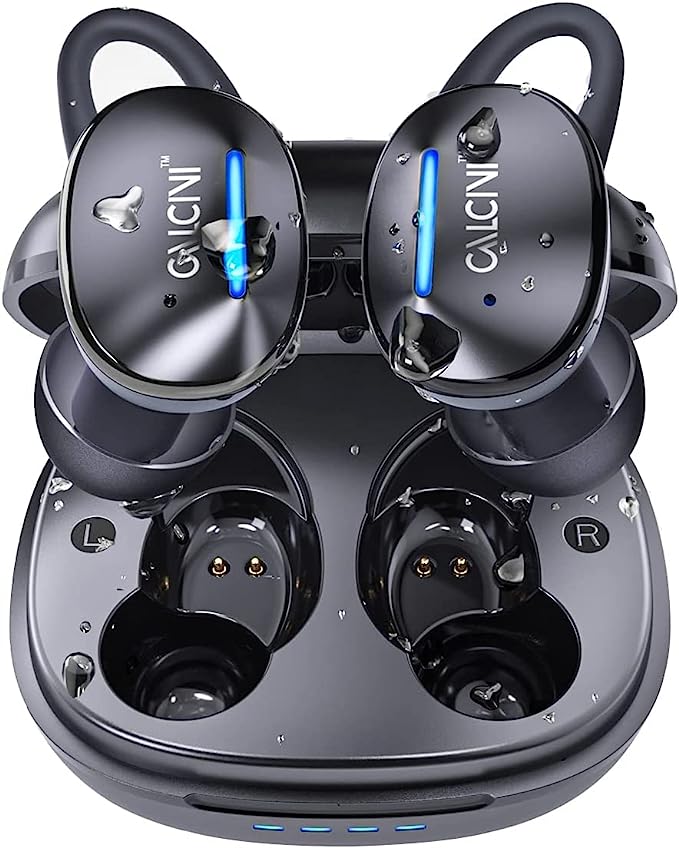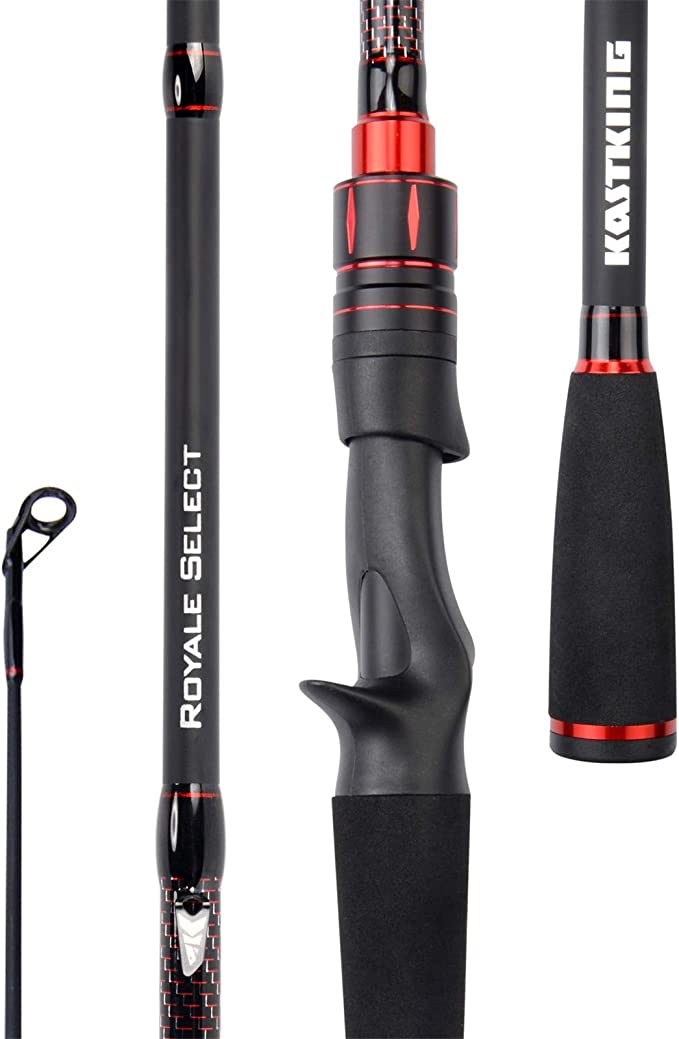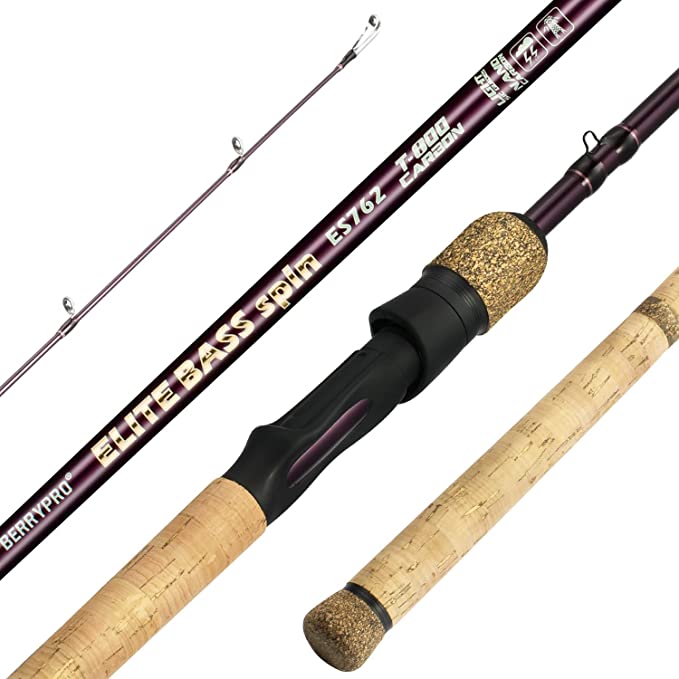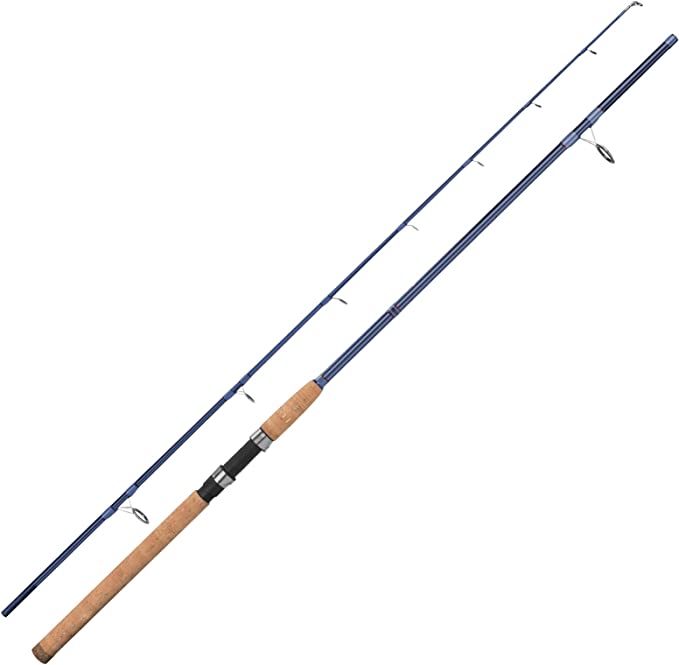Perfect Hatch The Opener Fly Fishing Rod & Reel Combo: Your Gateway to Fly Fishing Success
Update on Feb. 12, 2025, 5:30 p.m.
Unlocking the Art of Fly Fishing: A Beginner’s Journey
The gentle swish of a line arcing through the air, the delicate dance of a fly on the water’s surface, the sudden, electric jolt of a strike… Fly fishing. It’s a pursuit that captivates with its blend of artistry, science, and a deep connection to the natural world. But for those standing on the outside, looking in, it can also seem daunting. A bewildering array of gear, unfamiliar terminology, and the seemingly mystical skill of casting a nearly weightless fly – it’s enough to make anyone feel like they’re wading into uncharted waters.
I remember my own first forays into fly fishing. I’d spent years studying fish as a fisheries biologist, but the act of catching them with a fly rod felt like an entirely different discipline. It was like learning a new language, one spoken not with words, but with the subtle movements of rod, line, and fly.
Let’s follow Sarah, a friend and budding naturalist, as she embarks on her own fly fishing journey. Like many beginners, Sarah was initially overwhelmed. She’d spent hours browsing online, bombarded with advertisements for countless rods, reels, lines, and flies. Each product promised unparalleled performance, but the sheer volume of choices left her feeling more confused than confident.

The Physics of the Fly: It’s All About the Line
The fundamental difference between fly fishing and other forms of angling, like bait casting or spin fishing, lies in the physics of the cast. In those other methods, you’re essentially using the weight of the lure or bait to pull the line off the reel. But a fly – a delicate imitation of an insect, often weighing less than a gram – has virtually no mass. So, how do you cast it?
The answer is the fly line itself. A fly line is much thicker and heavier than conventional fishing line. It’s this weight, skillfully manipulated by the angler, that provides the momentum to carry the fly to its target. Think of it like cracking a whip: the energy travels down the length of the whip, culminating in a powerful snap at the tip. In fly casting, the rod acts as the handle of the whip, and the fly line is the whip itself. The angler’s movements create a series of loops in the line, transferring energy forward until the fly, attached to the end of a nearly invisible leader, is delivered with surprising accuracy.
Why Carbon Fiber? A Deep Dive into Material Science
Modern fly rods, especially those favored by anglers seeking a blend of lightness, strength, and responsiveness, are frequently crafted from carbon fiber. So why carbon fiber? The answer goes down to atomic level.
Carbon fibers are created by heating precursor materials, often polyacrylonitrile (PAN), to extremely high temperatures in a process called pyrolysis. This process drives off non-carbon atoms, leaving behind long, tightly interlocked chains of carbon atoms. These chains are aligned along the length of the fiber, giving it exceptional tensile strength – the ability to resist being pulled apart.
Imagine a bundle of microscopic ropes, each incredibly strong. That is similar to how carbon fibers are arranged within a composite material. These fibers are embedded in a matrix, typically an epoxy resin, which binds them together and transfers load between them.
The result is a material that is: * Extremely lightweight: Allowing for effortless casting and reduced fatigue. * Incredibly strong: Capable of withstanding the stresses of casting and fighting fish. * Highly sensitive: Transmitting even the slightest vibrations from the fly to the angler’s hand.
This allows anglers to make very accurate casts, and when they do get a bite, even the slightest nibble is telegraphed through the rod.

The Rod’s “Action”: More Than Just a Bend
When you hear fly fishers talk about a rod’s “action,” they’re referring to how much and where the rod bends under load. This is a crucial characteristic that significantly impacts casting performance and the feel of fighting a fish.
- Slow Action: These rods bend deeply, often all the way down to the handle. They’re known for their delicate presentations and their ability to protect light tippets (the very thin section of leader closest to the fly). They’re often favored for small streams and wary trout.
- Fast Action: These rods are stiffer, bending primarily in the top third. They generate high line speeds, allowing for long casts and the ability to cut through the wind. They’re often used for larger fish, heavier flies, and windy conditions.
- Medium Action: A compromise between slow and fast, offering a blend of power and feel.
- Medium-Fast Action: These rods are a sweet spot. They offer a good balance of power,for longer casts, and the flexibility, and feel, to protect medium tippets.
The Perfect Hatch Opener is described as having a “medium-fast” action. This means it provides a versatile balance, suitable for a wide range of fishing situations. It’s powerful enough to handle larger fish and cast in moderate wind, yet sensitive enough to feel subtle takes and protect reasonably light tippets.
Matching Rod and Line: The Importance of Weight
Fly lines, as we’ve discussed, are the key to casting a fly. But not all fly lines are created equal. They come in different weights, designated by a number (e.g., 5 WT, 8 WT). This number refers to the actual weight of the first 30 feet of the line, measured in grains (an old unit of weight, still used in fly fishing).
It’s crucial to match the line weight to the rod’s recommended weight. A rod designed for a 5 WT line will perform best with a 5 WT line. Using a line that’s too heavy can overload the rod, making it feel sluggish and potentially even damaging it. Using a line that’s too light won’t load the rod properly, making it difficult to cast effectively.
Sarah’s First Setup: The Perfect Hatch Opener
This is where a complete combo like the Perfect Hatch Opener becomes so valuable for a beginner. Sarah, faced with the daunting task of choosing a rod, reel, line, backing, and leader, found the ready-to-fish nature of the Opener incredibly reassuring. The fact that the line, backing, and leader were already pre-spooled onto the reel eliminated a significant source of potential confusion.
The Opener combo includes everything needed to start, the rod, the reel, line, backing, and leader. And it comes with a protective case. It’s not about endorsing a product; it’s about acknowledging a tool that simplifies the entry point into a complex sport. The different weight options (3/4 WT, 5/6 WT, 8 WT, and 7WT) allow anglers to choose a setup tailored to their specific needs, whether they’re targeting small trout in a mountain stream or larger bass in a lake.
Reading the Water: Beyond the Cast
Part of the fly fishing process is the ability to “read” the water you are fishing. Fish, even within the same body of water, will hold in different positions. This could be due to underwater structure, changes in current, food availability, and a host of other factors.
Learning to identify these areas, also called “lies”, greatly increases the chance of success.
Beyond the Cast: The World of Aquatic Insects
A significant portion of a fish’s diet, especially for species like trout and salmon, consists of aquatic insects. These insects – mayflies, caddisflies, stoneflies, and others – spend most of their lives underwater as nymphs or larvae, eventually emerging as winged adults to reproduce.
Fly fishing often involves imitating these insects, both in their underwater and adult forms. This is where the art of fly tying comes in, with anglers crafting intricate imitations of these insects using feathers, fur, and synthetic materials.
- Dry Flies: These float on the surface, imitating adult insects that have just emerged or are laying eggs.
- Nymphs: These sink below the surface, imitating the underwater larval stage of aquatic insects.
- Streamers: These are larger flies that imitate baitfish or other small creatures.
Understanding the life cycle of these insects, and knowing which ones are prevalent in a particular body of water at a given time of year, is a key skill for successful fly fishing.
A Ripple in the Ecosystem: Sustainable Fly Fishing
Fly fishing, perhaps more than any other form of angling, fosters a deep appreciation for the aquatic environment. The intimate connection with the water, the reliance on understanding the intricate web of life within a river or lake, naturally leads to a desire to protect these precious resources.
Sustainable fly fishing practices are crucial for ensuring the long-term health of fish populations and the ecosystems they inhabit. These practices include:
- Catch-and-Release: Carefully releasing caught fish back into the water, minimizing handling time and stress.
- Barbless Hooks: Using hooks without barbs, or pinching down the barbs on existing hooks, makes it easier to release fish unharmed.
- Proper Handling: Wetting your hands before handling fish to protect their delicate slime coat, and avoiding squeezing or holding them out of the water for extended periods.
- Respecting Regulations: Adhering to local fishing regulations, including size limits, catch limits, and seasonal closures.
- Leave No Trace Dispose of waste properly.

Sarah’s Success (and Continued Learning):
With the Opener combo and a little guidance, Sarah made her first cast. It wasn’t perfect, but it was a start. The line unfurled, the fly landed (somewhat clumsily) on the water, and for a moment, she felt the thrill of possibility. While she didn’t catch a fish on her first outing, she did experience the quiet satisfaction of learning a new skill, of connecting with nature in a new way. She felt the pull of the current, observed the insects hatching on the water’s surface, and began to understand the subtle language of the river.
Fly fishing is a journey, not a destination. It’s a continuous process of learning, adapting, and refining your skills. And that’s part of what makes it so rewarding. The Perfect Hatch Opener, or any well-chosen, balanced setup, can be a valuable tool on that journey, providing a solid foundation for years of angling enjoyment. The true magic, however, lies in the connection with the water, the pursuit of understanding, and the quiet joy of a perfectly presented fly.

